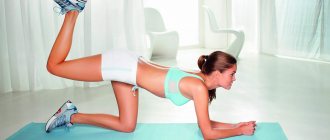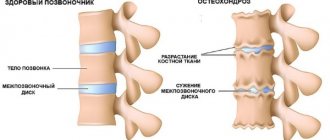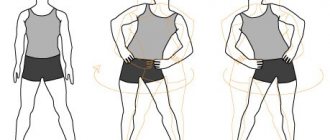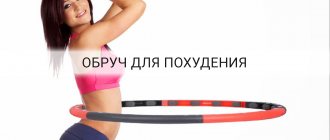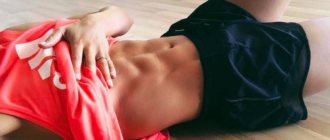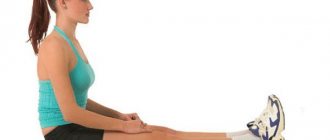13 minutes
681 views
“Currently, about 30% of people (28% men and 34% women) aged 15 years and over in the world were not physically active enough. Approximately 3.2 million annual deaths are associated with insufficient physical activity" (World Health Organization)
Myocardial infarction is necrosis (death) of the heart muscle (myocardium), which occurs due to acute insufficiency of coronary blood flow.
Read more about myocardial infarction, risk factors for its development and rehabilitation here: “Rehabilitation after myocardial infarction”
Physiotherapy exercises for myocardial infarction begin on the 2nd or 3rd day. First, exercises that are feasible for the patient are carried out, ensuring mobility in small and medium-sized joints, then the exercises become more complicated.
Wider use of physiotherapeutic rehabilitation begins from the 30-45th day from the onset of acute myocardial infarction in rehabilitation departments, sanatoriums or clinics. During this period, a set of measures is used, including strictly dosed walking, therapeutic exercises, and physiotherapeutic procedures.
Recommendations for physical activity, types of exercises and their duration are developed by the doctor, based on the age, weight of the patient who has suffered a myocardial infarction, the severity of damage to the heart muscle according to clinical, biochemical and electrocardiographic indicators, and the presence of concomitant diseases.
The Cardiological Sanatorium operates a medical program “Recovery”, within the framework of which the rehabilitation of patients who have suffered a myocardial infarction is carried out.
Cardiovascular diseases
The circulatory system is a closed circle that transports oxygen, nutrients, hormones and metabolic products in the body.
This system consists of the heart and blood vessels: arteries, veins and capillaries. The World Health Organization estimates that more than 15 million people die from CVDs each year, accounting for about a third of all deaths worldwide . Stroke and heart attack are in first place among cardiovascular diseases that lead to death.
Many factors contribute to the development of cardiovascular disease. The most vulnerable category of people include those who have:
● overweight, ● obesity, ● stress, chronic fatigue, ● lack of physical activity, ● inadequate diet (low nutrient content, high in trans fats and fast carbohydrates), ● addiction to smoking cigarettes, ● high cholesterol, ● glucose intolerance, ● old age, ● depression, ● insomnia.
The most common CVD diseases are:
● coronary heart disease (heart failure, cardiomyopathy, valvular heart disease); ● diseases of the vascular system (chronic venous insufficiency, varicose veins, venous thromboembolism); ● hypertension (blood pressure is higher than normal); ● arterial hypotension; ● heart attack; ● cardiac arrhythmia (heart rhythm disturbances); ● stroke; ● rheumatic heart disease; ● Raynaud's syndrome; ● cardiopulmonary failure.
It is worth noting that cardiovascular diseases are a problem in modern society and for many years have occupied a leading position among the main causes of mortality not only in Ukraine, but throughout the world. In many cases, this outcome is a consequence of poor lifestyle, decreased levels of physical activity and lack of proper and balanced nutrition.
What is a “proper diet”?
Doctors say: Most cardiovascular diseases are not part of a genetic or physical predisposition and can be easily prevented by making lifestyle changes and taking steps against risk factors such as smoking, unhealthy diet and obesity, physical inactivity and excessive alcohol consumption.
To each his own
Even after a heart attack, you should not give up on movement. After all, correctly chosen physical activity is one of the important conditions for recovery. It is not for nothing that while still in a hospital bed, patients, under the guidance of a doctor, begin to perform various exercises, then walk around the ward. And after discharge they are sent to exercise therapy rooms at clinics or sanatoriums. Therapeutic exercise for diseases of the cardiovascular system strengthens the heart muscle, increases its contractility, increases blood circulation, reduces cholesterol levels, and reduces the risk of blood clots. Good blood flow massages the walls of blood vessels, making them more elastic. All this is an excellent prevention of vascular atherosclerosis, the main cause of heart disease.
By the way, it has been proven that if you perform therapeutic exercises for a year after a heart attack, the mortality rate in the first year is reduced by 25%!
Article on the topic
First aid for a heart attack: what to do before the doctor arrives
As for playing sports for those who have suffered a heart attack, a strictly individual approach is necessary, otherwise a new attack can be provoked. The statistics are inexorable: 70% of recurrent heart attacks occur within 3 years after the first. Therefore, there is no need to argue with doctors: what motor regimen they recommend is what you need to follow. Depending on the degree of heart damage, for some patients the doctor may allow moderate exercise shortly after discharge from the hospital, while for others he will strictly prohibit even walking at a fast pace.
When choosing a training regimen, you should not rely on your own well-being, because this is a biased indicator. Thus, according to a study by scientists from the Kyiv Institute of Medical Problems of Physical Education, 14% of recreational joggers who never complained of heart problems were found to have serious myocardial problems, which were revealed only during a medical examination.
Article on the topic
How to protect yourself from a heart attack - quit bad habits!
How to train the heart and blood vessels?
During cardio training, the heart muscle works intensively, as well as the circulatory system, which is forced to pump more blood during aerobic exercise.
Physical exercises to strengthen the heart and blood vessels contribute to the development of endurance and strength, increase the volume of the lungs and heart, and improve blood circulation. For cardio exercise to have the desired effect, it is necessary to adjust its duration, intensity and frequency accordingly. Unfortunately, many of us, wanting to see results from our workouts as quickly as possible, repeat the same mistake - training too intensely for a short period of time. Aerobic training is not a sport that can bring quick results. In order to develop the heart and blood vessels to the required level, it takes time, regular training and patience.
Start at a calm, moderate pace that feels comfortable to you and your body—you're not out of breath, short of breath, dizzy, or throbbing in your temples. Half an hour of aerobic exercise a day will be enough if you are just starting your acquaintance with cardio exercises. Try not to interrupt your workout and, if possible, do not stop while doing the exercises. If it’s hard for you, slow down the pace or, as a last resort, take a step.
Training intensity
The intensity of cardio training is determined by heart rate (HR).
The general formula for calculating the maximum heart rate: HR max = 220 – age For healthy people, the optimal values can be divided into 5 zones:
Zone 1 – low intensity. Work in aerobic conditions in the range of 50-60% of maximum heart rate. Recommended for beginners. This type of training improves and maintains overall fitness and reduces tension and stress. Zone 2 – moderate intensity – fat burning zone. Work in aerobic conditions in the range of 60-70% of maximum heart rate. Zone 3 – high intensity – aerobic zone. Work in the range of 70-80% of maximum heart rate. The overall fitness and endurance of the body increases, but fat burning in this area is no longer as effective. Zone 4 – very high intensity, working in anaerobic conditions in the range of 80-90% of maximum heart rate. This area is for people in good physical shape. Training in this zone helps increase strength and speed, as well as muscle mass. A side effect may be too much lactic acid being released into the muscles, which can lead to excessive muscle soreness. The zone is not effective in reducing body fat. Zone 5 – extreme intensity – maximum effort. Work in anaerobic conditions above 90% of maximum heart rate. Such excessive efforts are only possible for a very short period of time.
Aerobic training can also be divided into two phases. In the first stage, glycogen is mainly burned, that is, carbohydrate reserves stored in the body (mainly in the liver and muscles). In the second phase, adipose tissue begins to be burned, increasing the load on the heart and blood vessels. It is for this reason that a cardio workout should have a certain duration and last about 40-50 minutes (fat burning usually begins 20-25 minutes after the start of exercise).
For this workout to be effective and beneficial, cardio should be performed at a moderate pace, increasing your heart rate to 60-70% of your maximum heart rate. Heart rate over long distances (from 40 minutes) should not exceed 120-130 beats/min.
What type of training should you choose?
There are a wide variety of cardio workouts, and you can choose the one that best suits your lifestyle and personal preferences: Rollers are a great option for those who want to have slimmer legs and stronger thighs. With the right motivation and regular exercise, you can even get rid of cellulite. A stepper is a good cardio exercise option for those who want to pump up their gluteal muscle. Running develops the heart, blood vessels and lungs. Increases endurance. Helps cope with depression, affects metabolism and regulates hormonal levels. Nordic walking has all the benefits of walking and is extremely enjoyable. Bicycle – While cycling, almost all muscle groups are involved. Develops the muscle corset, strengthens the cardiovascular system. Swimming trains the respiratory system and uses the muscles of the whole body. Water soothes, relieves tension, and relaxes tight muscles.
Walking
Therapeutic walking is dosed according to pulse, ECG dynamics, blood pressure and subjective data. Walking should not cause angina pectoris or other manifestations of coronary insufficiency (fatigue, significant decrease or increase in blood pressure, ECG changes).
The pace and duration of walking are purely individual, so they are set for each patient, taking into account his functional capabilities.
Before walking outdoors, for 4-6 days you should take short walks around the room and sit in the open air (on the balcony, veranda).
In the future, each time before walking, rest for 20-30 minutes, sitting outside. Walk rhythmically, at first no more than 50-60 steps per minute, without changing the pace, especially towards acceleration. It is not recommended to talk while walking.
Start walking and climbing stairs no earlier than an hour and a half after meals and end no later than an hour before meals.
Depending on how you feel, walking and stair climbing can be done up to 2-3 times a day.
If you experience pain in the heart area and behind the sternum, rapid heartbeat, dizziness and other unpleasant sensations, you should stop physical exercise and consult a doctor.
Walking training option for those who have had a myocardial infarction (if the training was started in the hospital)
- Day 1 - walking 100 m with rest (sitting) after 50 m. Tempo - 50-60 steps per minute. 2-3 times a day.
- Day 2 - walking 100 m with a stop after 50 m. The same. 2-3 times a day.
- Day 3 - walking 150 m with a stop after 50 and 100 m. The pace and quantity are the same.
- Day 4 - walking 200 m with a stop after 100 m. The pace and quantity are the same.
- Day 5 - walking 300 m with a stop after 100 and 200 m. The pace is the same. Once a day
- Day 6 - walking 300 meters with rest after 150 m. Pace - 60-65 steps per minute. Once a day.
- Day 7 - walking 200 m at a pace of 60-65 steps per m, accelerating in the middle of the distance to a pace of 70-84 steps per minute. Once a day. Or walking 400 m with a rest (sitting) after 200 m. The pace is 60-65 steps per minute. Once a day.
- Day 8 - walking 400 m with a stop after 200 m. Pace 60-65 steps per minute. After this, walking up the stairs for 5-10 steps and calming walking on level ground for 25-30 m.
- 9th day. The first time a day is walking 400 m with a stop after 200 m. The pace is 65-72 steps per minute. The second time a day is walking 80-100 m at a pace of 60-65 steps per minute and walking up the stairs 10-20 steps. Third time a day - walking 300 m at a pace of 65-72 steps per minute with two short-term accelerations up to 84 steps per minute.
- 10th day. The first time a day is walking 500 m with rest (sitting) after half the distance. The pace is 60-72 steps per minute. The second time a day - walk 100 m and climb 20-30 steps of stairs, then a short calming walk. Third time a day - walk 100 m at a pace of 84 steps per minute.
- 11th day. The first time a day - walking 500 m with short stops after 100, 200, 300, 400 m. Tempo - 65-72 steps per minute. The second time a day is walking 100 m and climbing 40 steps, followed by a short walk at a slow pace. The third time a day is walking 100 m. The pace is 84 steps per minute.
- 12th day. The first time a day is walking 500 m, stopping after 250 m at a pace of 65-72 steps per minute. The second time a day is walking 100 m and climbing 50 steps of stairs, followed by short walking at a slow pace. Third time a day - walk 100 m at a pace of 84 steps per minute.
Gradually lengthening the walking distance, you need to bring it up to 1 km on level ground, and on stairs - within two or three floors. The walking pace should be gradually increased.
health path
Terrenkur - dosed ascents. They are used primarily in sanatorium settings. Unlike measured walks on flat terrain, health path routes take place using ascents mainly at an angle of 3 to 10 degrees. The amount of physical activity in a health path depends on the length of the route (usually from 500 to 3000 m), the terrain and the angle of ascent, and the number of stops.
The correct sequence of physical exercises with a gradual increase in their training effect is of great importance.
Nordic walking
In terms of the degree of physical activity, Nordic walking is classified as cardio training and has no age restrictions.
Advantages over regular walking:
- not only the leg muscles are used, but also the muscles of the upper body, arms, and back, which helps to activate more than 90% of the body’s muscles;
- burns 40-50% more calories than normal walking;
- Nordic walking improves heart and lung function, increases blood circulation and heart rate by 15%;
- the load on the knee and hip joints, shin and ankle muscles is reduced.
For patients with cardiovascular diseases, before starting Nordic walking, you should consult a doctor.
(In the Cardiological Sanatorium you can rent poles and conduct Nordic walking classes under the guidance of an instructor. Nordic walking)
Physiotherapy
Shen's gymnastics gives excellent results in the recovery period after myocardial infarction. This is a special set of exercises that even a very weakened patient can perform a few days after a myocardial infarction or surgery, after consulting with the attending physician.
Shen's set of gymnastic exercises
- Sit on the floor in a Turkish pose, fold your hands on your stomach, and take 50 slow breaths through your nose.
- The starting position is the same. Move your jaws as if chewing food. Make 36 chewing movements.
- The starting position is the same. Massage your knees with circular movements of your hands 100 times.
- The starting position is the same. Place your hands behind your back on the lumbar region. Massage your back with up and down movements 100 times.
- The starting position is the same. Massage your back where you can reach it 100 times.
- The starting position is the same. Massage the sides of the body from the armpits to the thighs 100 times.
- The starting position is the same. Massage the abdomen in a circular motion 20 times with each hand.
- The starting position is the same. Massage the chest and abdomen along the oval 20 times with each hand.
- The starting position is the same. Massage the oval's chest 20 times with each hand.
- The starting position is the same. Massage along the midline of the body, stroking from top to bottom from the neck to the navel with each hand 20 times.
- The starting position is the same. Massage the side of your neck from ear to shoulder with your palms 30 times with each hand.
- The starting position is the same. Perform sweeping movements with the left hand of the right shoulder, and then with the right hand of the left shoulder. Try to reach the shoulder blade with your brush, 20 times with each hand.
- The starting position is the same. Massage your forehead, temples, cheek with your right hand from right to left, left hand from left to right 20 times with each hand.
- The starting position is the same. Use the heel of the palm of your right hand to massage the area of the right eye, then use the heel of the palm of your left hand to massage the area of the left eye 200 times with each hand.
- The starting position is the same. Massage your nose from top to bottom with both palms 10 times.
- The starting position is the same. Using washing movements, massage your face from top to bottom 10 times.
- The starting position is the same. Using the pads of your thumbs, massage the temple area 10 times.
- The starting position is the same. Using both hands, massage the crown area 10 times.
- The starting position is the same. Massage your ears on both sides at the same time 10 times.
- The starting position is the same. Throw your arms forward to the height and width of your shoulders, palms inward, then bend them at the elbows while clenching your fists 10 times.
- The starting position is the same. Raise your arms up and then make 10 rotational movements with your hands outward, straining your little fingers, and inward, straining your thumbs.
- The starting position is the same. Clench your hands into fists, without bending them at the elbows, raise and lower them 10 times.
- The starting position is the same. Extend your arms forward shoulder-width apart, palms up, then bend your elbows towards you and straighten them again 10 times.
- The starting position is the same. Stretch your hands, clenched into fists, shoulder-width apart, spread them to the sides and bring them together again, 10 times.
- Stand up straight, legs shoulder-width apart, body straight, do 50 half-squats with arms moving forward, up and to the sides and back. At the same time, the hands unclench, the fingers move apart with effort.
- Place your legs together, extend your arms forward at shoulder level, bending your elbows, bring your arms towards your body and then spread them to the sides. When raising your arms, rise onto your toes. Repeat 10 times.
- The starting position is the same. Stretch your arms in front of you, unclench your fists. Then bring your arms to your chest 10 times, moving your elbows as far back as possible, clenching your fists, and then return to the starting position.
- Repeat the previous exercise, but without moving your elbows back.
- Place your feet shoulder-width apart, place your hands on your waist, and bend your body to the right and left 10 times.
- The starting position is the same. Rotate your body 10 times in each direction, looking up during the exercise.
- Repeat the previous exercise, but look down while doing it.
- The starting position is the same. Bend your torso forward and backward.
- The starting position is the same. Perform 20 deep squats.
- The starting position is the same. Alternately raise the leg bent at the knee, then, straining the thigh, pull it forward, and then bring it to its original position. Repeat 10 times with each leg.
- Place your feet together. Alternately move your feet to the sides, rotating at the ankle joints, 10 times with each leg.
- Stand up straight, lower your arms down, walk in place with a sharp kick forward of your legs, 1 minute.
- The starting position is the same. Walk in place with a sharp forward thrust of the arms and legs of the same name, 1 minute.
- Walking in place with alternating movements of the same limbs in different directions (right leg forward - right arm back, left leg forward - left arm back) 10 times.
- Perform rotational movements in place, first to the left, then to the right. To do this, raise your arm, half bent at the elbow, to shoulder level and move it to the side. Following her with your eyes, turn your head, torso and step first with the foot of the same name, then with the opposite one in the same direction. Repeat 10 times in each direction.
- Standing straight with your arms down, perform 50 breathing movements (inhale-exhale).
Before going to bed, sit in a comfortable position, perform 50 breathing movements, massage each foot 50 times, then the lower abdomen, stroke your face and chest several times.
Types of sports exercises and games
Swimming enhances the activity of the cardiovascular system, increases metabolism, improves posture and strengthens the body. The most economical way of swimming is the breaststroke style (front and back).
You can dose swimming by gradually increasing the distance, increasing the speed, or both.
The Cardiological Sanatorium conducts classes in the pool as part of the following programs: “Treatment”, “Recovery” and “Cardioprevention”. This is therapeutic swimming and water aerobics.
Bike . Cycling is an endurance exercise and, at low speeds, has a moderate impact on the cardiovascular system.
In the Cardiological Sanatorium you can rent a bicycle, there is a bicycle path. Leisure.
Skis
Skiing has a beneficial effect on all human organs, increases endurance, has a positive effect on the general mood and gives great pleasure.
Towns
In the Cardiological Sanatorium, the game “Towns” is one of the types of preventive, therapeutic and rehabilitation areas. The sanatorium has allocated a closed area for conducting classes, the federation has provided the necessary equipment, the classes are conducted by a trainer - instructor Alexander Vasilenko.
As part of this project, a number of events will be held, including a Seminar-workshop “Towns - the role of the game on the functional state of the human body, its musculoskeletal system, its health, as well as a beneficial effect on the life expectancy of a person who regularly plays the folk game “Towns” "
Table tennis
Develops the muscular system and serves as a means of general training. Unlike “big” tennis, it can be practiced even in old age.
Volleyball is similar in nature to tennis, but the intensity of the load is much less.
The cardiological sanatorium has volleyball and basketball courts.
Run
Of course, it is a potent drug and, depending on its nature, can cause excessive stress. Healthy running is useful for training the cardiovascular and respiratory systems, and for metabolic disorders (obesity).
There are many contraindications for running, so you should definitely consult your doctor.
Benefits of Cardio Exercise
Cardio training trains more than just your heart. In fact, aerobic exercise has positive effects on the entire body. Cardio improves immunity, saturates the body with oxygen, improves the condition of the skin and hair. There is a regulation of metabolic processes and hormonal levels. Improves mood, brain activity, performance and endurance. And most importantly, such training for the blood vessels of the brain, heart and lungs can prevent the development of diseases such as heart attack, stroke and diabetes! Isn't it a miracle? Do cardio workouts with FitCurves and stay healthy!
Exercises at home
Heart training, muscle and vascular training can also be done at home. For example, squats next to the door. You need to squat while holding the door handles, knees in line with your toes. Start with a small number of repetitions, bringing them up to 100 in 2 months, then more. First, squat twenty to thirty centimeters, after a month - deeper. The muscles of the heart, spine and legs are strengthened. And contractions of the leg muscles help the blood flow upward through the veins.
In recent years, Nordic walking with poles has become popular. Try to walk rhythmically, naturally, working with your arm and leg at the same time. Exercises like this are a great outdoor workout for your heart!

